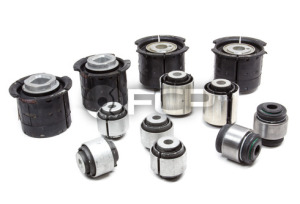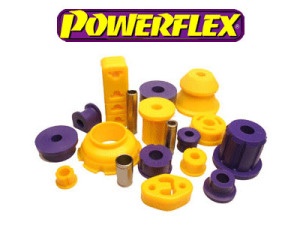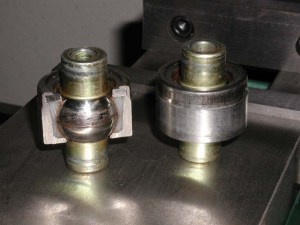
A car's suspension system cushions the vehicle from imperfections and undulations in the road surface, smoothing out the bumps while dampening suspension motion to help you maintain control of your car in a comfortable manner.
When dealing with an older and tired suspension, the strut and shock assemblies are often the first things to be replaced to address harsh handling and response over bumps and potholes. However, an important other suspension component lurks that may also profoundly affect how the car handles.
The control arms, strut and shock assemblies, and any other suspension component often attach to the frame of the car with rubber bushings. Why use compliant rubber, and not a direct linkage such as a spherical bushing or metal sleeve? Suspension bushings perform another important function in the car's comfort and ride quality - noise isolation.
Rubber is smooth and quiet
Rubber is used in factory mass-produced street cars because it has an excellent isolating and dampening characteristics. This helps to prevent direct conduction of road surface noise into the vehicle's frame, which then can be felt and heard from inside the cabin. The tradeoff between materials of different hardness determines many handling and comfort characteristics of the car.
Factory rubber bushings are designed to provide a smooth and quiet isolated ride which prevents the conduction of noise from the road surface. This makes the interior of the car quiet when traveling over uneven surfaces and also makes for predictable handling as the rubber material can stretch and move around (to a small extent).
The downside of the soft and smooth ride that factory rubber bushings provide is their relatively short lifespan and lack of steering and handling accuracy. I found that the factory control arms on my Volvo XC90 V8 are only good for 40k-50k miles, after which the handling deteriorates and steering response becomes sloppy.
I prefer precision handling
 Powerflex suspension bushings
Powerflex suspension bushings
As a car enthusiast - I prefer more precision handling of the car over a soft quiet cushy ride, and I'm willing to accept a little more NVH (Noise, Vibration, and Harshness) for that tradeoff. I would also be thrilled if bushings would last longer than 50k miles to lower maintenance effort on the car. The solution to my problem would be to install polyurethane bushings into the suspension, replacing the soft and compliant rubber bushings.
A wide variety of vendors sell poly bushings, and removal of the stock bushings can be a pain. Many factory bushings need to be cut out or pressed out with a press, or require specialist tools. However, many aftermarket bushings are designed to be easily installed and are often two-piece which reduces the need for specialized equipment or a press to install them.
Have you installed polyurethane bushings in your Euro car?












